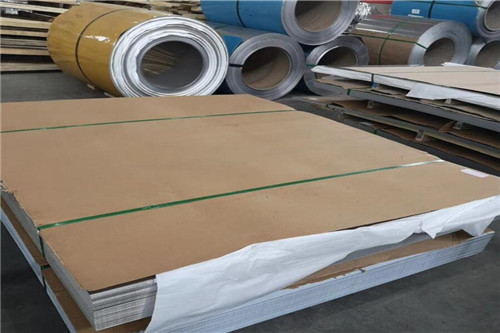
The surface of the stainless steel plate is smooth and has high plasticity, toughness and mechanical strength, and is resistant to corrosion by acids, alkaline gases, solutions and other media. It is an alloy steel that does not easily rust, but it is not absolutely not rusty. The stainless steel plate refers to a steel plate that is resistant to corrosion by weak media such as the atmosphere, steam, and water, and the acid-resistant steel plate refers to a steel plate that is resistant to corrosion by chemically aggressive media such as acids, alkalis, and salts. Stainless steel plates have been around since the beginning of the 20th century and have a history of more than a century.
Stainless steel plate is a general term for stainless steel plate and acid-resistant steel plate. In the beginning of this century, the development of stainless steel plates laid an important material and technical foundation for the development of modern industry and technological progress. There are many kinds of stainless steel plates and different performances. It has gradually formed several categories during the development process. According to the organizational structure, it can be divided into four categories: austenitic stainless steel plate, martensitic stainless steel plate (including precipitation hardening stainless steel plate), ferritic stainless steel plate, and austenitic plus ferritic duplex stainless steel plate. The main chemical components or some characteristic elements in the steel plate are classified into chromium stainless steel plate, chromium nickel stainless steel plate, chromium nickel molybdenum stainless steel plate, low carbon stainless steel plate, high molybdenum stainless steel plate, high purity stainless steel plate, etc. According to the performance characteristics and uses of steel plates, it is divided into nitric acid resistant stainless steel plates, sulfuric acid resistant stainless steel plates, pitting corrosion resistant stainless steel plates, stress corrosion resistant stainless steel plates, high strength stainless steel plates, etc. According to the functional characteristics of steel plates, it is divided into low temperature stainless steel plates, non-magnetic stainless steel plates, free-cutting stainless steel plates, superplastic stainless steel plates, etc. The commonly used classification method is based on the structural characteristics of the steel plate and the chemical composition of the steel plate and the combination of the two. Generally divided into martensitic stainless steel plate, ferritic stainless steel plate, austenitic stainless steel plate, duplex stainless steel plate and precipitation hardening stainless steel plate, etc. or divided into two categories of chromium stainless steel plate and nickel stainless steel plate. Typical applications: heat exchangers for pulp and paper equipment, mechanical equipment, dyeing equipment, film processing equipment, pipelines, materials used for building exteriors in coastal areas, etc.
The surface of the stainless steel plate is smooth and has high plasticity, toughness and mechanical strength, and is resistant to corrosion by acids, alkaline gases, solutions and other media. It is an alloy steel that does not easily rust, but it is not absolutely not rusty.